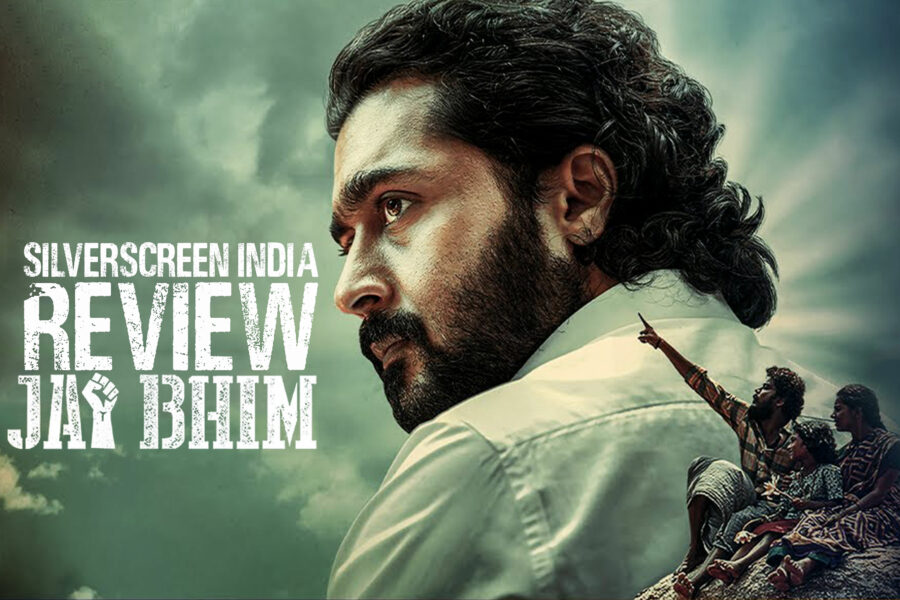Jai Bhim, directed by TJ Gnanavel, is a fictionalised account of a real incident. A young man from the Irula tribal community in a Tamil Nadu village is wrongly charged with theft and arrested by the local police. One night, he goes missing from the police station. His pregnant wife, with the help of a Chennai-based lawyer, Chandru, a man with a conscience in a space teeming with corrupt and greedy individuals, helps her fight the case against the cops.
It is a phenomenal story where the Goliath, the arrogant state police machinery, is taken on by a group of Davids armed with nothing but the law. Suriya, a mainstream star with a great fan following in South India, plays the lawyer, who is, essentially, a supporting character to the protagonists, Senggeni (Lijomol Jose, whose fantastic performance shoulders the film) and Rajakannu (K Manikandan).
Jai Bhim, a powerful political salutation and slogan, is not verbalised in the film. But the phrase captures the film’s objective – to inform the viewers of the atrocities committed by the larger society on the impoverished minority communities, and more importantly, to instil the hope that truth and justice will eventually prevail, thanks to the work of good people.
However, a noble objective and a great story do not always translate into good cinema. Jai Bhim moves the audience, albeit into believing that the world is made of blacks and whites, the virtuous and the evil, a simplification a good writer will not voluntarily undertake.
The film recognises Chandru as a hero right in the moment of his introduction – an over-the-shoulder slow-motion shot of him leading a protest, sloganeering, his fist raised high in the air. There is no ascend to heroism but a plain – lazy, if one may say so – declaration through typical hero shots and revolutionary music that he possesses all the qualities to be admired.
One might wonder how different the film would have looked had Chandru been treated not as an angry editorial but as a human being in flesh and blood, who did not know the answers to every question on ethics and morals. In an early scene, a senior police officer tells him, “We are as human and socially conscious as you are,” and Chandru shoots him down with a sneer.
Suriya earnestly tries to fill the vacuum in the character construction to some extent. He keeps everything understated. Inside the courtroom, he does not scream but maintains a low profile. He breaks into a half-smile when he is interacting with Senggeni’s daughter. Although the film divulges nothing about where Chandru comes from or what drives him to be the social crusader, Suriya manages to give an impression that there could be a fascinating personal story to him.
If Chandru is a hero for being good at what he does and possessing a good heart, Senggeni, despite her integrity and an incredible will to survive in an unfair world, is portrayed as a powerless person. The film turns soppy whenever the Irula tribe members are on the screen. The close shots of violence inside the police station cell rob the tribal members of dignity and gradually turn the viewers immune to the horridness. The camera, in random shots, watches the victims writhing on the ground as the cops’ lathi sticks land on their bodies. The women shriek, the children wail. The police violence, a little while into the film, becomes a clinical activity, and the painful screams, meaningless noise.
Vetrimaaran’s Visaranai (2016) used a confident new formal language to talk about custodial violence. The prison scenes in Jai Bhim match the gruesomeness of Visaranai but miss the point by several miles. Visaranai wanted to inform the viewer of the cynicism the State is founded on. The narrative dashes towards a pitch-dark ending where the viewer witnesses, rather uncomfortably, the execution of a crime in which they indirectly participated.
In Jai Bhim, the depiction of violence is not sensitive but the result of a tasteless attempt at creating and heightening the drama. In a courtroom scene, when a forensic doctor mentions finding chilli powder on the body of an accident victim, the film, in extreme close shots, demonstrates the police using the powder on a civilian. And the scene is stretched out, pounding the details into the viewer.
To draw an immediate comparison, consider Kosa, Mohit Priyadarshi’s searing debut drama set in Bastar, centred on the illegal arrest and subsequent disappearance of Kosa, a tribal boy. It opens to a scene that blends subjective and objective, documentary and fiction, in which the boy is walking from home to work, meeting fellow villagers on the way and exchanging pleasantries. The scene ends in a long shot where a police vehicle stops him and picks him up; the camera’s gaze is cold but the spectator feels the chills. Kosa, indeed, does not speak the language of the mainstream, unlike Jai Bhim. But isn’t mainstream cinema ready for a revival? Could the new Tamil cinema dismantle the old walls and become more inclusive while adhering to the codes of a worn-out language?
Recommended
Jai Bhim is an important work that brings to the OTT sphere a story that happened on the fringes. In all fairness, it gets a lot of things right about the line between mainstream and the outcaste, about the innate cruelty of the police system in India. However, its refusal to stay human and its tendency to drown out the truly powerful silences and whispers in an ocean of screams make it a lousy work.
*****
The Jai Bhim review is a Silverscreen original article. It was not paid for or commissioned by anyone associated with the movie. Silverscreen.in and its writers do not have any commercial relationship with movies that are reviewed on the site.



